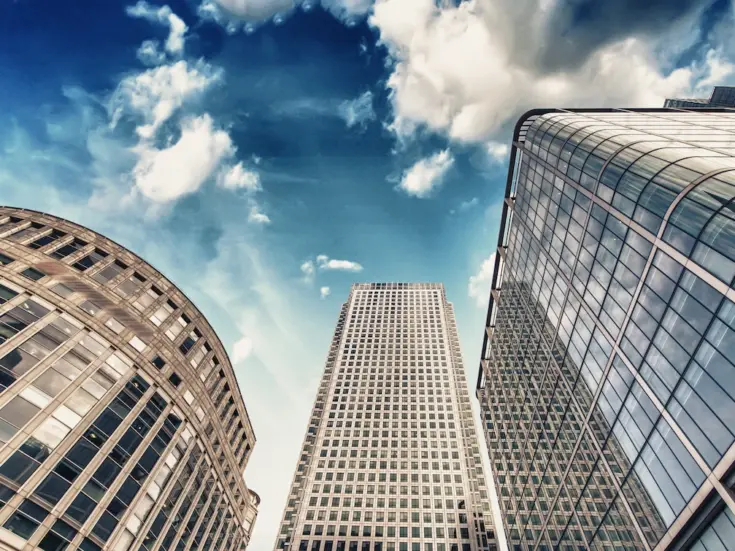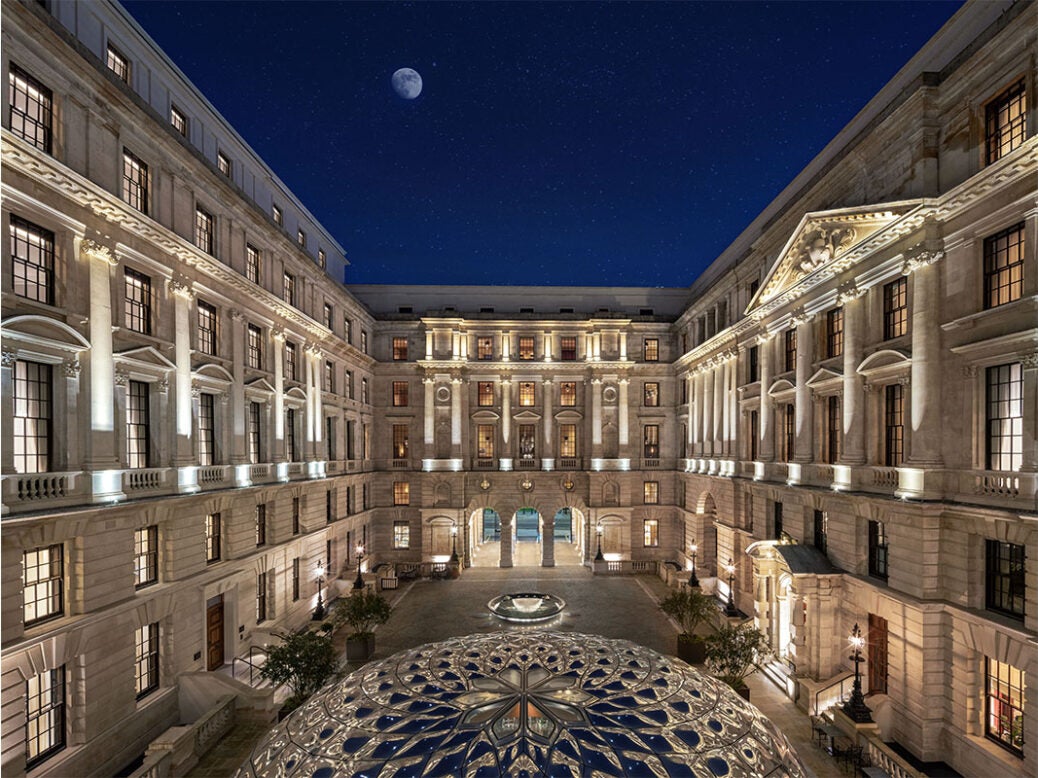
The eight-year restoration of The Old War Office building (today known as The OWO) in London’s Whitehall marks a significant chapter in the history of the building and the life of this world-famous thoroughfare. It is one of the largest such projects in Europe and marks a transformation of this exceptional former government office into a truly unique hospitality destination.
[See also: G.P. Hinduja tops Sunday Times Rich List as billionaire numbers fall]
The OWO site has evolved over the centuries, from the former Palace of Whitehall and home to King Henry VIII and other monarchs, to the home of Britain’s Ministry of Defence in 1906. Today it is a beacon of luxury hospitality.
As a Grade II*-listed building, it is one of the capital’s most imposing examples of Edwardian Baroque architecture and therefore a fascinating story of restoration, preservation and adaptation. This once-secret government building has now had its doors flung wide open to the public for the first time in its history and plays a role as a ‘now open’ part of London’s architectural heritage and a legacy for the capital.
Preserving heritage and character
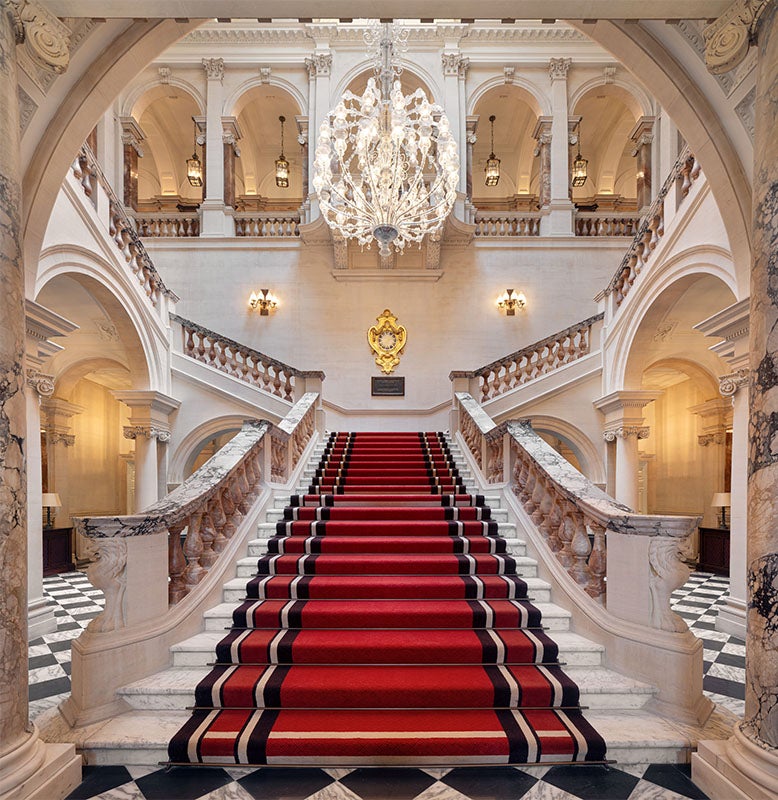
Today’s appreciation of history, restoration and sustainability meant that the teams behind the restoration (from 2017 to 2023) had to consider the recycling of ancient building materials, preventing waste, reducing energy use and lowering any carbon footprints. And changing the use of a historically sensitive premises required an understanding of which parts of the building had a hierarchy of importance, as well as a consideration of the original architect’s vision (William Young, back in the late 19th century).
[See also: The OWO Residences by Raffles is about legacy, says Sanjay Hinduja]
From the outset, the restoration intended to keep the authenticity of the building alive, as it has such incredible history and character. Certain key areas, such as the Grand Staircase and second-floor State Rooms carried more ornate decoration than other spaces within the building. Wherever possible, the stunning original features were sensitively restored, and, where necessary, new elements were sympathetically added to match the existing detailing.
A memorable stay in a hotel which carries such world-renowned history evokes emotion, excitement and enquiry. The retention of panelling, existing décor, artwork, lighting and certain furniture styles all pay homage to how visitors might imagine a head of state’s office. This style is carried throughout each of the Heritage Suites, which all would have originally housed iconic political figures such as Sir Winston Churchill, David Lloyd George and Lord Haldane.
If the walls could talk
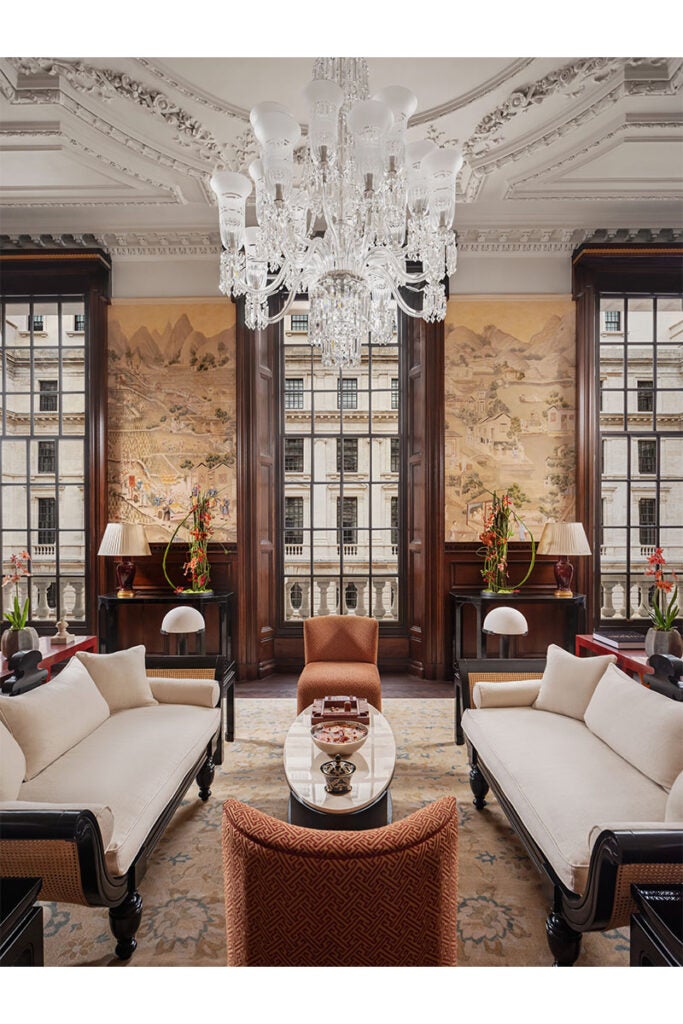
Even the 2.5 miles of corridors carry a unique story, as they were wide enough to allow messengers, often boy scouts, to pass notes and distribute post throughout the building on bicycles in the first half of the 20th century. We take communication and technology for granted nowadays, but this physical distribution of a message – down a long, wide corridor, on a bike and often at speed – was crucial during the tense periods of the first and second world wars.
Several interior designers were employed on the project, all of whom provided their own additional layers to the scheme’s different uses (hotel, residential apartments, spa and restaurant spaces). However, all were sure to embrace the common theme of showcasing the classic detailing throughout, embracing the charm of the existing building’s mosaic flooring, timber panelling, ornate cornice work, and lantern and chandelier lighting.
[See also: Shalini Hinduja on how Raffles London at The OWO breathes new life into British history]
The team were fortunate to have gained an early dialogue with the Prince’s Regeneration Trust, Historic England and Westminster Council. All worked to explore how they could alter a building designed as a fortress – crafted to keep visitors out – into a best-in-class hospitality and residential destination. The original façade of the former government building has now been largely retained and sensitively cleaned and restored to its former glory, with the original stone Portico meticulously reinstated as a grand hotel entrance.
The OWO: Open to the public
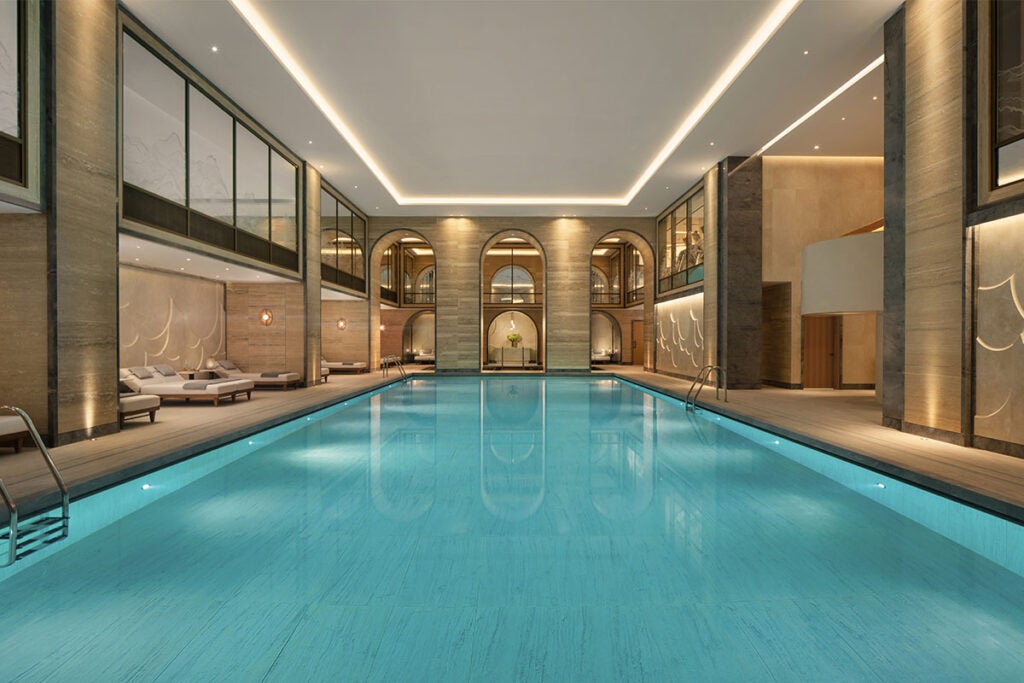
To open the building to the public for the first time in history, the redesign had to innovatively incorporate welcoming new routes for residents, visitors and guests. A once closed-off quadrangle courtyard was made accessible from Horse Guards Avenue, providing an exclusive arrival space for both the luxurious 120-room flagship hotel Raffles London at The OWO and the 85 homes of The OWO Residences by Raffles. And a wonderful mixture of internal and external al fresco dining experiences have been added.
A small army of craftspeople worked on every aspect of this restoration – from stonemasons to carpenters to marble experts to specialist metalworkers and highly skilled structural engineers. Below-ground areas were dug deeper to create a dazzling double-height Whitehall Ballroom that can seat up to 600 people, as well as an extensive 27,000-square-foot luxury spa with a 20-metre swimming pool, headed by storied fragrance house Guerlain and movement experts Pillar Wellbeing.
[See also: The best health clubs and spas in 2024]
Work also took place in secret subterranean basement level B1. Today this area is now restored and leads to the secret Spy Bar. Indeed, the design of the original building lent itself to pay homage to the plethora of spies whose secrets were guarded by the walls of The OWO. The bar is situated in two former rooms that were numbered 006 and 007 in the early 20th century and functioned as high-security storage vaults for identity papers and mission reports of MI5 and MI6 agents. Today the area operates as a cocktail bar – reminiscent of the late-night drinks, cloak-and-dagger moments and secret forms of communication.
[See also: The Spy who Banked Me: how the City shaped James Bond]
A ‘must-see’ destination
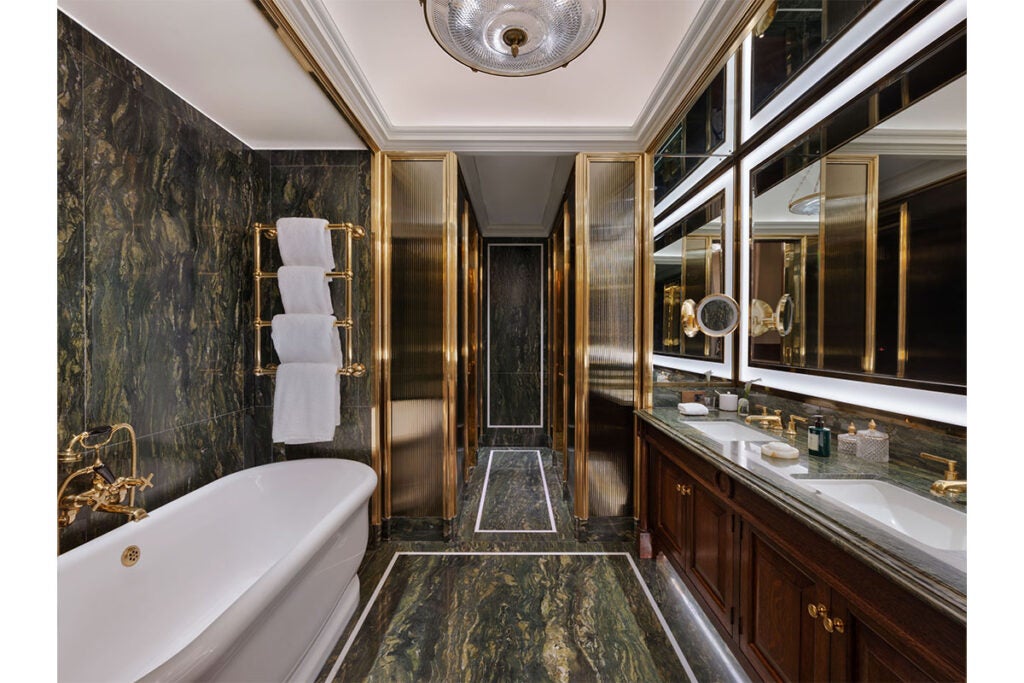
Original mosaic flooring running along the corridors, immense sash windows, original stone and marble fireplaces and ornate plasterwork act as strong reminders of the building’s past – creating an incredible new ‘must-see’ destination in the heart of Westminster. The reimagining of this iconic piece of British history is a perfect example of how an obsolete building can be intelligently reshaped for a new chapter of life as something completely different.
This iconic building is now able to be enjoyed by a new generation of visitors and guests who can experience the artistry of its detailing. And it will play its part in reshaping the perception of Whitehall as a historic centre of London, as The OWO, with the hotel, combined with nine restaurants and three bars, will act as a beacon to those seeking the magic combination of history, luxury and fun.
Even the signature dining concept of Mauro Colagreco at Raffles London at The OWO is an ode to preservation, since this Michelin-starred chef is the first chef to be appointed as a Unesco Goodwill Ambassador for Biodiversity.
The preservation of heritage buildings is a watchword for the Raffles brand. Many of its iconic properties are housed within historic walls that exude history and notable stories. This historic backdrop is now proud to be part of the appeal for travellers the world over.
Rates from £1,100 including VAT
Instagram: @raffleslondon.theowo
Web: raffles.com/london


